Teachers are always looking for books to pair with required units of study. Most students in the 3rd or 4th grade study the indigenous cultures of their region. Quality picture books by indigenous creators are few and far between so I was thrilled to find Peace Dancer and Orca Chief by Roy Henry Vickers and Robert Budd.
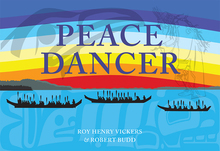
Both books are traditional stories from the village of Kitkatla in British Columbia. This is the home town of the authors. Roy Henry Vickers is an artist and writer and Robert Budd is a historian. Roy holds a leadership position within his tribe. They belong to the Gitxaala Nation which is part of the larger language group known as the Tsimshian. Kitkatla is on the coast of British Columbia just east of the Islands of Haida Gwaii.
Peace Dancer is a traditional tale about the fate that befalls the people when children fail to respect a crow. It’s a flood narrative, which is interesting because so many ancient cultures have some kind of flood story. It gives the explanation for why a peace dancer is so important in a potlatch ceremony. In the author note, Roy Henry Vickers explains that he is the peace dancer for his community.
 Orca Chief is also a story about the importance of respect for the natural world. In this story a group of disrespectful fishermen are taken under the sea to visit the Chief of the Orcas. After the fishermen apologize the Orca Chief forgives them and shows them ways to find many good things to eat–herrings, oolichan, and crabs.
Orca Chief is also a story about the importance of respect for the natural world. In this story a group of disrespectful fishermen are taken under the sea to visit the Chief of the Orcas. After the fishermen apologize the Orca Chief forgives them and shows them ways to find many good things to eat–herrings, oolichan, and crabs.
Both books have stunning illustrations, combining a mainstream modern painting style with traditional formline art to represent the fish, birds and animals. They are vividly colored and brilliantly produced on the highest quality paper. If Vickers and Budd were Americans and therefore eligible, they would be contenders for the Caldecott with each of these books.
This week is small press week and it’s worth noting that these books are published by Harbour Publishing, a small independent publisher in British Columbia. They have been publishing the work of Vickers and Budd for many years. The pair has a new board book out this year called Hello Humpback.
When you are looking for diverse titles–especially by indigenous writers and artists–don’t forget the small presses.

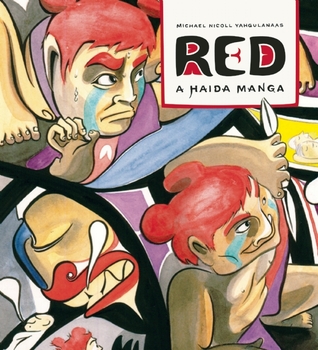 One of the things I love about PNBA is the opportunity to meet small press publishers and see work by emerging artists and and Indigenous story tellers. By far the most distinctive work I saw this year was a graphic novel called Red: a Haida Manga by Michael Nicoll Yahgulanaas. He is a visual artist and storyteller from Haida Gwaii (formerly the Queen Charlotte Islands)
One of the things I love about PNBA is the opportunity to meet small press publishers and see work by emerging artists and and Indigenous story tellers. By far the most distinctive work I saw this year was a graphic novel called Red: a Haida Manga by Michael Nicoll Yahgulanaas. He is a visual artist and storyteller from Haida Gwaii (formerly the Queen Charlotte Islands)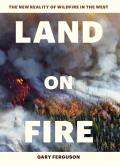 Ordinarily I recommend only children’s books on my blog, but in view of the fires which are burning hundreds of square miles of my home state, including some of my very favorite places in the wide world, I’d like to recommend a book by my friend Gary Ferguson. He has written dozens of books about the wilderness and its role in our lives. His book just out this summer is called Land on Fire. Its a well-researched look at how we got into our current cycle of catastrophic fires year after year, through decades of fire suppression and record draughts. It would be a great book group read and a worthwhile text for high school and even middle school science classes.
Ordinarily I recommend only children’s books on my blog, but in view of the fires which are burning hundreds of square miles of my home state, including some of my very favorite places in the wide world, I’d like to recommend a book by my friend Gary Ferguson. He has written dozens of books about the wilderness and its role in our lives. His book just out this summer is called Land on Fire. Its a well-researched look at how we got into our current cycle of catastrophic fires year after year, through decades of fire suppression and record draughts. It would be a great book group read and a worthwhile text for high school and even middle school science classes. Writing about the ravages of colonial control over First Nations in the United States and Canada is difficult enough when addressing adults. It’s even more challenging when presenting material to the youngest readers. How to convey the seriousness and depth of pain without crushing the spirit of the child reader–it’s a huge challenge, and I admire any author who even attempts to take it on. Few come out with such a successful result as author Melanie Florence in her picture book Stolen Words about her grandfather’s forced enrollment in boarding school and the loss of his mother tongue. Ms. Florence tells the story of a young girl who innocently asks her grandfather how to say grandpa in Cree. He tells her about being taken away from home and punished at the boarding school for speaking his Cree language. Illustrator Gabrielle Grimard captures this beautifully representing the Cree language as a blackbird captured in a cage and locked away. It’s an image that conveys the sadness and brutality of the Canadian boarding school without presenting images too heart-breaking for young readers. The girl finds a Cree dictionary in her own school and brings it to her grandfather and the words on the page, again symbolically, take the fo
Writing about the ravages of colonial control over First Nations in the United States and Canada is difficult enough when addressing adults. It’s even more challenging when presenting material to the youngest readers. How to convey the seriousness and depth of pain without crushing the spirit of the child reader–it’s a huge challenge, and I admire any author who even attempts to take it on. Few come out with such a successful result as author Melanie Florence in her picture book Stolen Words about her grandfather’s forced enrollment in boarding school and the loss of his mother tongue. Ms. Florence tells the story of a young girl who innocently asks her grandfather how to say grandpa in Cree. He tells her about being taken away from home and punished at the boarding school for speaking his Cree language. Illustrator Gabrielle Grimard captures this beautifully representing the Cree language as a blackbird captured in a cage and locked away. It’s an image that conveys the sadness and brutality of the Canadian boarding school without presenting images too heart-breaking for young readers. The girl finds a Cree dictionary in her own school and brings it to her grandfather and the words on the page, again symbolically, take the fo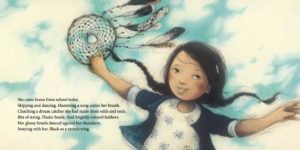 rm of blackbirds and fly free. It’s a simple tale–too simple for older readers certainly who need much more substance and a less tidy resolution. But for the youngest readers this is an important story of native language denied and ultimately regained, and a book well worth celebrating.
rm of blackbirds and fly free. It’s a simple tale–too simple for older readers certainly who need much more substance and a less tidy resolution. But for the youngest readers this is an important story of native language denied and ultimately regained, and a book well worth celebrating.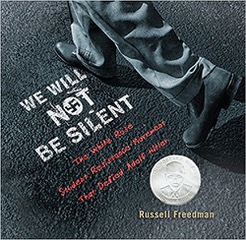 We Will Not Be Silent: The White Rose Student Resistance Movement That Defied Adolf Hitler is the story of Austrian teenagers Hans and Sophie Scholl who at the beginning of Hitler’s rise to power were glad to join the Hitler youth which they saw as a patriotic organization. But as the Hilter Youth moved from scout-like campouts to militia training and racist indoctrination, the Scholl siblings knew they had to resist at any cost. They put together The White Rose, a society devoted to making Hitler’s war crimes known and turning the tide ofGerman popular opinion against the Nazis. They succeeded, although it cost their lives. Freemen’s book is well researched and includes many historical photographs and yet it handles this very dark subject matter in such a way that most elementary school students can understand without being emotionally overwhelmed.
We Will Not Be Silent: The White Rose Student Resistance Movement That Defied Adolf Hitler is the story of Austrian teenagers Hans and Sophie Scholl who at the beginning of Hitler’s rise to power were glad to join the Hitler youth which they saw as a patriotic organization. But as the Hilter Youth moved from scout-like campouts to militia training and racist indoctrination, the Scholl siblings knew they had to resist at any cost. They put together The White Rose, a society devoted to making Hitler’s war crimes known and turning the tide ofGerman popular opinion against the Nazis. They succeeded, although it cost their lives. Freemen’s book is well researched and includes many historical photographs and yet it handles this very dark subject matter in such a way that most elementary school students can understand without being emotionally overwhelmed.